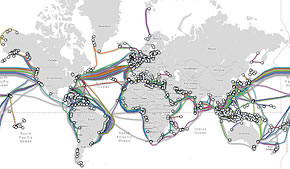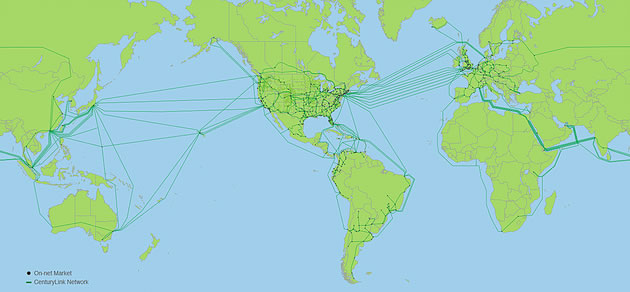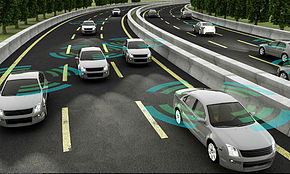
One of the new terms in the data center industry is Edge Data Centers. What is the Edge? Where is the Edge? Before we begin to understand what an Edge Data Center is, it might be helpful to first understand what it is not.
An Edge Data Center is not simply a:
- small data center,
- data center located in a smaller city, or
- smaller data center managed by a large business or organization.
It is also important to understand the major services that deliver Edge data center services to the users. The major services include:
- Content,
- Transit, or
- Access
For enterprise data centers supporting corporate businesses, the content is owned and managed by the business. The transit and access may be owned and managed by the business or may be provided by service providers.
One of the first implementations of Edge Data Centers was by global internet content providers. These global internet content providers are the organizations that provide the vast majority of content that users access from the Internet. Some of the largest content providers include Amazon, Facebook, Google, Microsoft, Netflix and YouTube, which make up more than 80% of all traffic on the Internet. These content providers previously had their content "live" within data centers in one or more of the Tier 1 locations globally.

A Tier 1 location would be a site that provides access to one or more Tier 1 Network providers. A commonly accepted definition of a Tier 1 network is a network that has access to all other networks on the Internet without having to purchase access via transit or peering relationships.The figure shows the global submarine network cables that are routed between countries. (Source: Global Submarine Cables Map, www.submarinecablemap.com/#/) These global network cables are connected to Tier 1 network Transit Providers in data centers located in the major cities shown.
The Tier 1 Transit Providers are network service providers that offer long-haul network services either regionally, nationally or globally. CenturyLink is one of the Tier 1 Transit Providers, and their network connecting major cities throughout the globe is shown in the figure below. (Source: CenturyLink North American Network: www.level3.com/~/media/files/maps/en-network-services-level-3-network-map.ashx)

Prior to implementing Edge Data Centers, the major Content Providers peered with Tier 1 Transport providers at data centers in one or more of the Tier 1 cities. When content was requested by a user, that content had to be delivered over the Tier 1 Transport Provider's network from the Content Provider to the user, through the user's Access Provider. The Access Provider is the local network services provider that connects homes and businesses to the internet.
The amount of content on the Internet continues to grow, along with the number and locations of users throughout the globe. A single piece of content could be requested by millions of users located throughout the world, all within a very short period of time. Think of a video or social media post that goes viral. Previously when content was stored and delivered only from Tier 1 locations, each of these users accessed the internet through their Access Provider. Each one of these users would have made individual requests to access the content, inundating the Transport Provider's network with traffic. This is where the Edge data center helps alleviate the heavy traffic on the Transport Provider's network.
Global content providers can implement Edge Data Centers closer to the consumers of their content. This way the most sought-after and popular content of the time is stored locally in an Edge data center. So that when users request the content, that content only traverses the Transport Providers network once.
So how many Edge data centers should there be and where should they be located. In this case it's mostly about the financial analysis of weighing the cost of the Edge data center vs the cost of delivering content over a Transport network. Is it cost effective to pay for data to travel over the Transport Provider network each time a user requests the content or is it more cost effective to have a regional or local Edge data center that has the content stored locally.

Edge Data Centers have also become important for mobile applications that require low latency between the content user and the content provider. Some examples of these new low latency applications include services incorporating autonomous driving, augmented or virtual reality. Each of these types of services will be supported by 5G wireless carrier services. In order for content service providers to deliver mobile low latency applications over 5G, the content service providers can deploy Edge Data Centers distributed throughout 5G wireless carrier's network nodes. This does not mean that all low latency applications over 5G networks will have the content transported solely over the wireless carrier's network. At the wireless carrier's node there can be an interface to local public internet networks. The result is that the 5G wireless carrier is used only for access from their node to the device connected via 5G, with the backhaul transport provided by local public internet networks providing a more cost-effective solution without congesting the 5G wireless carrier transport infrastructure inter-connecting their nodes.

Edge Data Centers have also been used in industries that have geographically distributed content users, or geographically distributed data gathering devices to capture data for analytics. Many of these industries have been incorporating Edge methodologies long before the term Edge Data Centers even became mainstream. As Internet of Things (IoT) devices continue to be developed, edge data centers will also become a valuable part of the infrastructure to provide low latency, low cost solutions to capture data analytics and deliver content.
Industries that have incorporated Edge Data Centers with geographically distributed data gathering include:
- Industrial process (e.g. refineries),
- Transportation (e.g. traffic analysis and road condition reporting),
- Retail (e.g. POS), or
- Manufacturing (e.g. plant processes).
Industries that have incorporated Edge Data Centers with geographically distributed content users include:
- Healthcare (e.g. remote clinical/surgery support),
- Higher Education (e.g. remote campuses),
- Financial Services (e.g. remote branches/kiosks), or
- Government (e.g. remote service centers, military, distaster response).
Appropriate solutions for Edge Data Center facilities vary greatly depending on the specific needs of the applications, supporting compute, storage and network hardware. Solutions can include:
- Computer room or single cabinet in a physical building,
- Containers
- Modular/Smart Buildings
- Outsourced with Colocation vendor
- Co-locate with wireless cell sites or telecommunication central offices
- Co-locate with other local businesses (gas stations) or services (libraries, postal services)
- Outdoor enclosure/cabinet (similar to existing cable TV or telco neighborhood enclosures)
When implementing an Edge Data Center, another consideration that will need to be made is, how much redundancy is required for the critical systems within the Edge Data Center? There are many factors that will impact what is the appropriate level of robustness and redundancy. However, we can use the same methodology that we use for enterprise data centers in helping guide these decisions, although the outcome may be different.
Philip J. Isaak, PE, P.Eng., DCDC, RCDD, SMIEEE is an expert witness, consultant & trainer in the design, construction, procurement, implementation, commissioning & operations of information technology, telecommunications & critical data center facilities. Mr. Isaak provides clear analysis for complex disputes, incorporating industry standards, best-practices and over 20 years of consulting & training expertise working with clients located in 28 countries and territories across 6 continents.
©Copyright - All Rights Reserved
DO NOT REPRODUCE WITHOUT WRITTEN PERMISSION BY AUTHOR.















